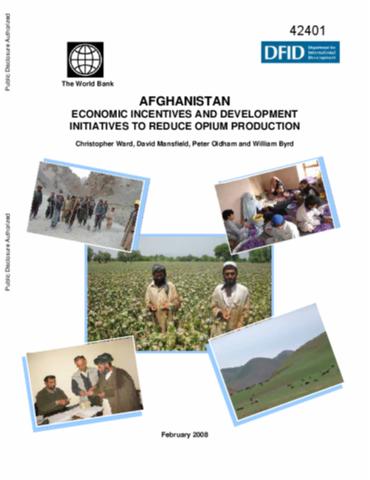Resource information
This report is about how to progressively reduce over time Afghanistan's dependence on opium - currently the country's leading economic activity - by development initiatives and shifting economic incentives toward sustainable legal livelihoods. Specifically, the report identifies additional investments and policy and institutional measures to support development responses that can counterbalance the economic advantages of opium. It analyzes ways to change the relative incentives between licit and illicit cropping and to help enhance rural livelihoods for the poor, under better governance and security conditions. The report puts forward concrete recommendations and the expected impacts on growth, poverty reduction and the opium economy are assessed. The report first briefly discusses the policy context (Chapter 1) and provides an overview of the opium economy (Chapter 2), focusing on how different segments of the rural population interact with it. The report then analyzes the scope for increasing value added, competitiveness and productivity in agriculture (Chapter 3) and for promoting enterprise development and off-farm employment (Chapter 4). The complementary role of further investments in rural infrastructure is examined in Chapter 5, and measures for strengthening governance are analyzed in Chapter 6. In Chapter 7 issues that cut across all counter narcotics efforts are examined. A final chapter looks at implementation, and at issues of prioritization, synergies and phasing (Chapter 8). The recommendations of the report are encapsulated in a matrix at the end of the Executive Summary.


